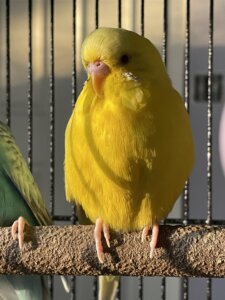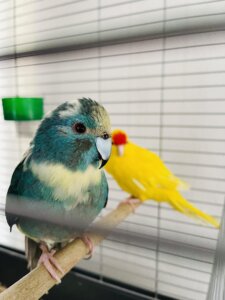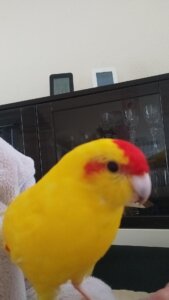Are Kakarikis Better in Pairs?
Yes, Kakarikis are often happier in pairs. They thrive with companionship.
Kakarikis, known for their vibrant personalities, are social birds. Keeping them in pairs can enhance their well-being. These lively parrots enjoy interaction and play, which a partner can provide. A solo Kakariki might feel lonely or bored, leading to stress.
Pairs can entertain each other, promoting a healthier, happier life. Understanding their social needs is crucial. This introduction explores the benefits of having Kakarikis in pairs. We’ll discuss why they flourish together and how it impacts their behavior and health. Stay with us to learn more about creating a joyful environment for your Kakarikis.
Introduction To Kakarikis
Kakarikis, also known as New Zealand parakeets, are lively and social birds. They thrive best in pairs, ensuring companionship and reducing loneliness. This enhances their overall well-being and happiness.
Kakarikis, also known as New Zealand parakeets, are lively and social birds. Their name means “small parrot” in Maori. These birds are full of energy and charm. They bring joy to many bird lovers with their playful nature.
What Are Kakarikis?
Kakarikis are small parrots native to New Zealand. They have bright green feathers with a splash of red or yellow on their heads. They are known for their distinctive, cheerful chirping. They enjoy climbing, jumping, and exploring their surroundings. These birds are intelligent and curious. They can learn tricks and mimic sounds.
Unique Traits
Kakarikis have several unique traits that make them special. They are very active and need plenty of space to move around. They love to dig and forage, often seen scratching the ground. Their flight patterns are swift and agile. Kakarikis are also known for their strong bonds with their owners. They thrive on social interaction and attention. Their playful antics and friendly demeanor make them a delight to watch.
“`
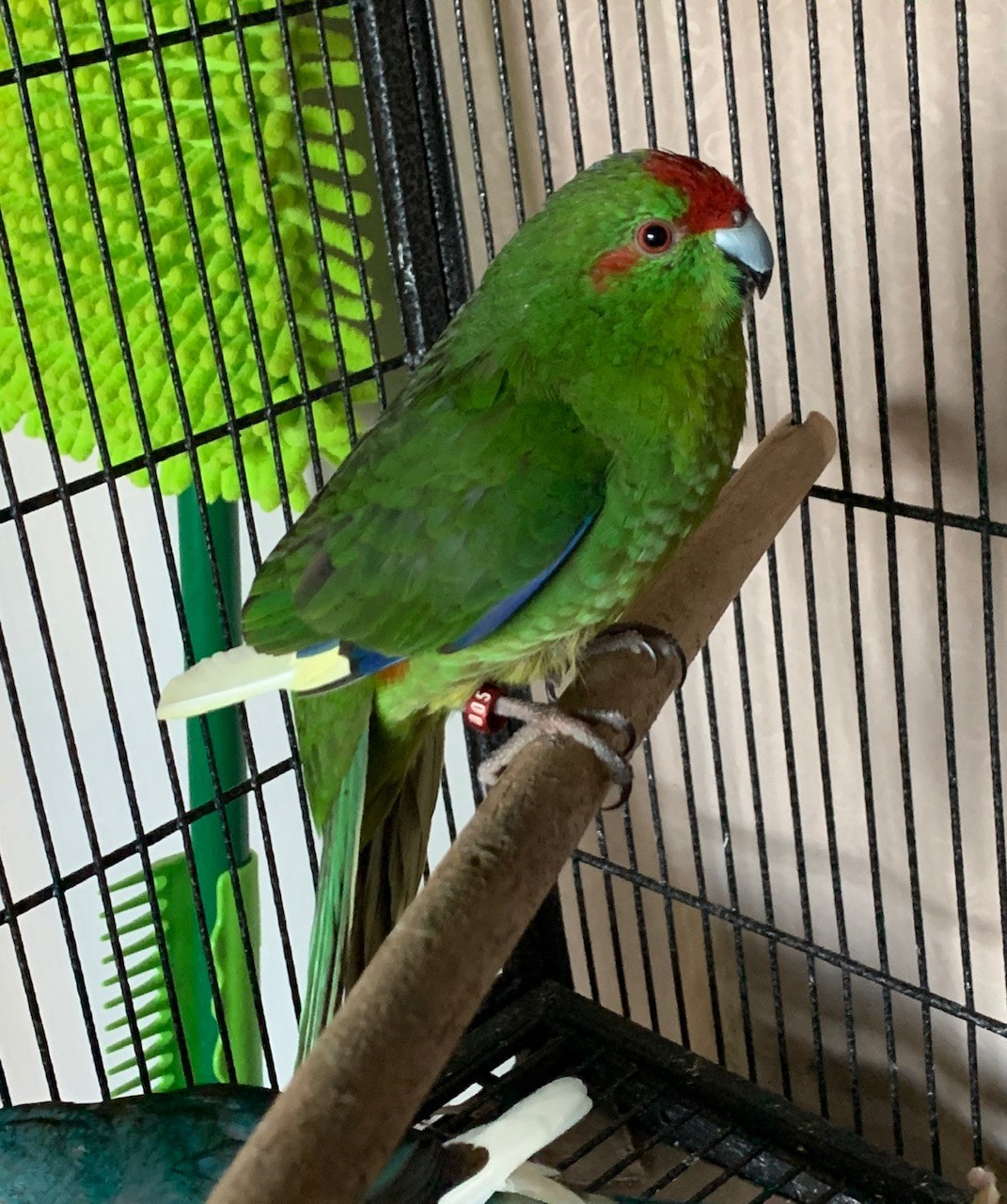
Credit: www.featheredtreasuresaviary.com
Kakarikis In Pairs
Kakarikis are small, energetic parrots known for their social behavior. Keeping them in pairs can have many benefits. This section explores why having two Kakarikis might be better than one.
Social Nature
Kakarikis are highly social birds. They thrive on interaction and company. In the wild, they live in flocks, so they are naturally inclined to seek companionship. A single Kakariki might feel lonely and stressed without a companion.
Having a pair helps them stay mentally stimulated. They engage in playful activities together, which reduces boredom. This can lead to a happier and healthier life for both birds.
Behavioral Patterns
Kakarikis display interesting behavioral patterns when kept in pairs. They often groom each other, showing affection and bonding. This mutual grooming strengthens their relationship.
Aggressive behavior is less common in pairs. Birds can share their energy and frustration with each other. This means less destructive behavior towards their surroundings. Also, they communicate through a variety of sounds. Observing their interactions can be very entertaining.
In summary, keeping Kakarikis in pairs aligns with their natural social needs. It helps them lead a more fulfilling life.
Benefits Of Pairing
Pairing Kakarikis, or New Zealand parakeets, can be highly beneficial. These birds are social creatures. Keeping them in pairs ensures they are happier and healthier.
Enhanced Social Interaction
Kakarikis thrive on social interaction. In the wild, they live in flocks. Pairing them at home mimics their natural environment. This leads to more engaging and dynamic interactions.
A single Kakariki may feel lonely. With a companion, they can play and communicate. This reduces boredom and behavioral problems.
Improved Mental Health
Pairing Kakarikis also benefits their mental health. A lonely bird can become stressed. Stress can lead to feather plucking and other health issues.
Having a companion provides mental stimulation. It keeps their mind active and engaged. This reduces the likelihood of depression and anxiety in Kakarikis.
Consider these points for a healthier and happier bird. Pairing is a simple yet effective way to enhance your Kakariki’s life.
Challenges Of Keeping Pairs
Keeping Kakarikis in pairs can be fulfilling. It also comes with unique challenges. These challenges need careful consideration to ensure the well-being of your birds.
Space Requirements
Kakarikis are active birds. They need plenty of space to fly and explore. A pair requires a larger cage. This ensures they have enough room. A small cage can lead to stress and health issues.
Consider a cage with multiple levels. This provides more space for movement. Outdoor aviaries are ideal if you have the space. Always make sure the cage is secure and escape-proof.
Potential Aggression
Sometimes, Kakarikis can be aggressive towards each other. This is especially true during mating seasons. Aggression can lead to injuries. It’s important to monitor their behavior closely.
Provide plenty of perches and toys. This helps reduce boredom and aggression. Separate them if you see signs of serious fighting. This prevents injuries and keeps both birds safe.
Single Kakariki Considerations
Deciding whether to keep a single Kakariki or a pair is important. There are specific considerations for single Kakariki. Understanding these can help provide the best care and environment for your bird.
Bonding With Owners
Single Kakarikis tend to bond more with their owners. They seek interaction and companionship from humans. This bond can be very strong and rewarding. Spending quality time with your Kakariki is essential. It helps in building trust and a close relationship. Regular interaction keeps them happy and engaged.
Stimulation Needs
Kakarikis are active and curious birds. They need constant mental and physical stimulation. Single Kakarikis may require more toys and activities. This keeps them entertained and prevents boredom. Puzzle toys and foraging activities are great options. Rotate toys frequently to keep their interest alive. Interactive playtime with the owner is also crucial. It helps in meeting their stimulation needs effectively.
Ideal Living Conditions
Creating the ideal living conditions for your Kakariki is crucial. These lively birds need specific environments to thrive. Keeping them in pairs can significantly improve their well-being. Let’s explore the essentials.
Cage Size
A spacious cage is essential for Kakarikis. They are active birds and need room to move around. Here are some guidelines:
- Minimum size: 60x40x40 cm per bird
- Optimal size: 100x60x60 cm for a pair
Ensure the cage has horizontal bars. This allows Kakarikis to climb easily. Place the cage in a quiet area. Avoid direct sunlight and drafts.
Enrichment Activities
Kakarikis are curious and intelligent. They need mental and physical stimulation. Provide a variety of toys:
- Foraging toys: Encourage natural behaviors.
- Chew toys: Prevent boredom.
- Swings and ladders: Promote exercise.
Rotate toys regularly to maintain interest. Offer supervised out-of-cage time. This provides additional exercise and bonding opportunities. Create a safe space for this activity.
| Item | Purpose |
|---|---|
| Foraging Toys | Encourages natural behaviors |
| Chew Toys | Prevents boredom |
| Swings | Promotes exercise |
Engage with your Kakarikis daily. Talk to them and offer treats. They enjoy interaction and will bond with you.
Feeding And Nutrition
Feeding and nutrition are crucial for keeping your Kakarikis happy and healthy. A balanced diet ensures they get the right nutrients for their growth, energy, and overall well-being. Whether you have one or a pair, understanding their dietary needs and feeding schedules is key.
Dietary Needs
Kakarikis need a varied diet to thrive. Their main food includes seeds, fruits, and vegetables. A balanced diet should look like this:
- Seeds: A good quality seed mix. It should include sunflower seeds, millet, and canary seeds.
- Fruits: Apples, grapes, and berries. Always remove seeds and pits.
- Vegetables: Leafy greens, carrots, and bell peppers. These are great sources of vitamins.
Protein is also essential. Offer them small amounts of cooked egg, chicken, or legumes.
Provide fresh water daily. Make sure the water is clean and free from contaminants.
Feeding Schedules
Feeding schedules help keep your Kakarikis in good health. Consistency is key. Here’s a simple feeding routine:
- Morning: Fresh fruits and vegetables. Remove any leftovers after a few hours to avoid spoilage.
- Afternoon: Seed mix. Make sure the seeds are fresh and not stale.
- Evening: A small protein source. Alternate between different protein types to provide variety.
Monitor their food intake. Adjust portions as needed. Too much food can lead to obesity, while too little can cause malnutrition.
Remember to clean their feeding bowls regularly. Hygiene is important to prevent illnesses.
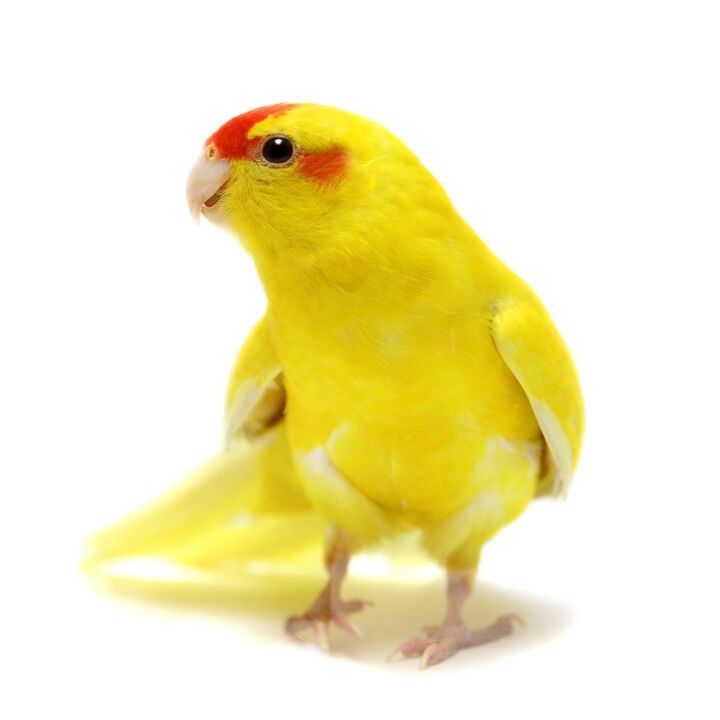
Credit: www.petguide.com
Health And Wellness
Ensuring the health and wellness of your Kakarikis is crucial. Kakarikis are active birds. They need the right environment and care to thrive. Keeping them in pairs can positively impact their well-being. It helps reduce stress and loneliness. This section will explore common health issues and veterinary care for Kakarikis.
Common Health Issues
Kakarikis can face several health problems. Some of the most common issues include:
- Feather Plucking: Often caused by stress or boredom.
- Respiratory Infections: Symptoms include sneezing and discharge.
- Digestive Problems: Diarrhea or lack of appetite.
Keeping Kakarikis in pairs can help alleviate some of these issues. They engage in social interaction. This reduces stress and promotes overall health.
Veterinary Care
Regular veterinary care is essential for Kakarikis. A routine check-up can help in early detection of health issues. Here is a simple table outlining the frequency of common vet visits:
| Type of Visit | Frequency |
|---|---|
| General Check-up | Once a Year |
| Grooming (nails, beak) | Every 3-4 Months |
| Vaccinations | As Recommended |
In addition to regular check-ups, watch for signs of illness. Early detection can make treatment easier. Keep an eye on their behavior. Any change can indicate a health issue.
Frequently Asked Questions
Do Kakarikis Need A Companion?
Yes, Kakarikis thrive better with a companion. They are social birds and enjoy the company. Keeping them in pairs prevents loneliness and promotes their well-being.
Can Kakarikis Live Alone?
Kakarikis can live alone but it is not ideal. They are social creatures and may become bored or stressed without a companion.
How Do Kakarikis Behave In Pairs?
In pairs, Kakarikis exhibit more playful and interactive behavior. They communicate, groom each other, and engage in social activities, enhancing their quality of life.
What Are The Benefits Of Keeping Kakarikis In Pairs?
Keeping Kakarikis in pairs prevents loneliness, promotes social interaction, and encourages natural behaviors. It also enhances their mental and physical health.
Conclusion
Pairing Kakarikis can bring them joy and companionship. They thrive better together. Solo Kakarikis may get lonely and bored. A pair keeps each other active and happy. Consider your space and time before deciding. A pair needs more attention and care.
Overall, paired Kakarikis often lead to healthier, happier birds. Choose what fits best for your lifestyle and their well-being. Your Kakarikis will thank you with cheerful chirps and playful antics.
Hello Dear, I'm Poli Kolymnia, owner of many birds (including budgies).
With a deep passion for these feathered companions, I'm here to share my expertise and extensive knowledge on birds care.
My articles cover essential topics like diet, housing, care, and health, providing practical tips to help you create a happy and thriving environment for your birds.


